
Image Credit: All photos: Alexi Arango
As they set out to build a single-family Passivhaus on Potwine Lane in Amherst, Massachusetts, Alexi Arango and LeeAnn Kim asked themselves, “Is it possible to live without burning fossil fuels?” One measure of success would be meeting their goal of net-zero energy performance. This is the eighth blog in a series.
May 5, 2014: More driveway work
Work on the driveway continued this week, preventing much of anything else from happening. I realized that I’m having regrets about the whole driveway operation. But, on a positive note, the placement of the window locations appears to have turned out perfectly.
I should have gone off-grid
The driveway work is a colossal operation that has been taking more than twice as long as expected. The exposed electrical, phone, and cable conduit are laid down in the trench shown in the photo above. They will be covered up next week. Sewer and water lines have already been put down and buried. The total area that was dug up covered the entire width of the original driveway, a gravel driveway that was perfectly usable as is. At $50,000, it’s the single most expensive part of the construction.
What if I didn’t need all those hook-ups to the street? The sewer line could have been replaced by a septic tank. Maybe the water line could have been replaced by a well. Phone and cable are essentially obsolete: satellite can accomplish the same thing. The remaining challenge is to provide off-grid electricity, which would have required solar panels and lots of batteries.
Off-grid might have been cheaper
Given the cost of the driveway, off-grid electricity might not be as far-fetched as you might think. Right now, the cost of batteries for off-grid solar is not subsidized and is not competitive economically. However, battery costs are falling rapidly and their performance has been improving steadily. Remember when your laptop lasted only two hours on a charge? Now, thin and lightweight laptops last all day on a single charge. According to one group, off-grid solar photovoltaics plus battery storage will be cheaper than grid electricity in five years in the Northeast.
Assuming a well and a septic tank would have cost $25,000, the remaining $25,000 could have gone toward solar panels and battery backup. A 2-kW solar array will cost about $8,000, leaving $17,000 for batteries. Batteries for three days of storage (11 kWh x 3 = 33 kWh) might cost about $7,000 ($200/kWh x 33 kWh = $7,000), leaving an extra $10,000 in savings! Wow.
It is possible that I would have needed to double the solar array size in order to account for peak demand, but still… I had no idea it would be so close.
Beautiful window openings
A great thing happened when I was showing my neighbor, Nancy, the house for the first time.
As she walked up the steps, she exclaimed: “Oh, look at the mountain!” I was beaming inside. Nancy had no idea how much thought and energy went into to crafting the top of the stairway. I can’t believe it actually worked as planned.
May 11, 2014: The driveway is done, almost
The most expensive part of the entire project – the essentially unnecessary driveway – is almost done.
Normally, you want to complete the driveway first, before embarking on construction, but our project got off to a late start and the winter prevented us from doing driveway work until now.
At left, a sheet of fabric is put down to separate the bottom layer of dirt from the top layer of “gravel” – that’s what the guys call it even though it looks like dirt to me. I suppose keeping the two layers separate helps stabilize the driveway.
The tiniest steamroller in the world is compacting the gravel — it’s adorable. After construction is complete, a final layer of “TRG” (trap rock gravel) will be placed on top of the dirt. The TRG consists of small stones and sand that compacts well and can be plowed in the winter.
Now that the dirt is compacted around the home, delivery trucks don’t have to worry about getting stuck in the mud. My only concern is that I want a vegetable garden in front of the house and I’m worried that compacting the soil will make the ground less amenable to cultivation. The driveway guys didn’t seem to think it was an issue.
Work on the roof trim
I’m not sure how he got up there, but somehow Don got started on the roof trim – see the white boards along the edge of the roof – without scaffolding or a ladder. When I asked him how he did it, he said: “I’m a monkey.” Next week, the metal standing-seam roof will go up and Don is eager to borrow the scaffolding that the roofers will put up.
The R-100 vaulted ceiling
You might remember that the ceiling upstairs will serve as the air and moisture barrier, with an astonishing 26 inches of blown-in cellulose as insulation on top of the ceiling (in the roof trusses) giving an out-of-this-world R value of R-100! The Zip sheathing (in green) is placed face down on the underside of the roof truss. On the lower right-hand side of the image, you can just barely see how the taped seal runs under the roof eave and attaches to the underside of the ceiling Zip.
The housewrap
A delicate process, reminiscent of wrapping a Christmas present, is required to seal the moisture barrier around the window openings. First, the air barrier is taped at the edge between the window frame sheathing and the SIP OSB, shown at left.
Second, the housewrap is taped to the window frame sheathing.
Getting the edges right is always the tricky part. An extra piece of tape goes right at the corner, running horizontally along the inside crease of the window frame.
The heat pump
I’ll talk more about the heat pump later when it actually gets installed, but for now, here’s a quick overview.
The heat pump provides both space heating and air conditioning. We’ve chosen a minisplit, dual-zone, ductless model, meaning that there is an outdoor unit (a condenser) and two wall mounted indoor units (the evaporator cassettes) connected by two refrigerant lines (a gas line and a liquid line). This is different from central air conditioning or forced-air heating where a central unit in the basement blows air through ducts to each room.
How does a heat pump work?
It’s a complicated process — a miracle of science — and you need to know a certain amount of thermodynamics to really understand it, but here’s how a heat pump (as well as your air conditioner and your refrigerator) works, in a nutshell.
The outdoor condenser, which houses a big noisy fan and a noisy compressor, serves to turn the refrigerant from a liquid to a gas (when in heating mode). The refrigerant is piped inside to each wall mounted indoor unit which simply blows air over the refrigerant — turning the refrigerant back to a liquid — and in the process extracts hot air. The cycle runs in reverse in air conditioning mode, turning the refrigerant from a gas to a liquid outside and extracting cool air when turning the refrigerant back to a gas. The process can move heat around at a seemingly impossible efficiency of almost 400%, way better than a normal furnace which might be 70% efficient.
The refrigerant lines
Here’s where the outdoor unit will go once the siding is finished. Those bunches of tubing puncturing the wall are the refrigerant lines.
Inside, the tubing snakes through the walls to the evaporator unit. A water line allows condensed water to drain away. Notice how much simpler it is to install these lines than it would be to install all of the ductwork for a central heating or air conditioning unit.
Why don’t we need heat in every room?
The home is so well insulated and so tightly sealed that the temperature will be even throughout the entire house. You just need to add a bit of hot air at one location and the heat will eventually propagate everywhere. We have one cassette upstairs for cooling in the summer and one unit downstairs for heating in the winter. The thermostat will be set to a given temperature and a minimal amount of energy will be required to keep the temperature constant.
A great feature of these heat pumps is that they can run at extremely low settings, quietly trickling in the tiniest amount of heat without having to noisily cycle on and off like a traditional system.
Alexi Arango is an assistant professor of physics at Mount Holyoke College in South Hadley, Massachusetts, where he and his students conduct research on next-generation photovoltaic cells. Arango teaches a joint physics/environmental studies course on renewable energy. Arango’s blog is called Potwine Passive House.
Weekly Newsletter
Get building science and energy efficiency advice, plus special offers, in your inbox.






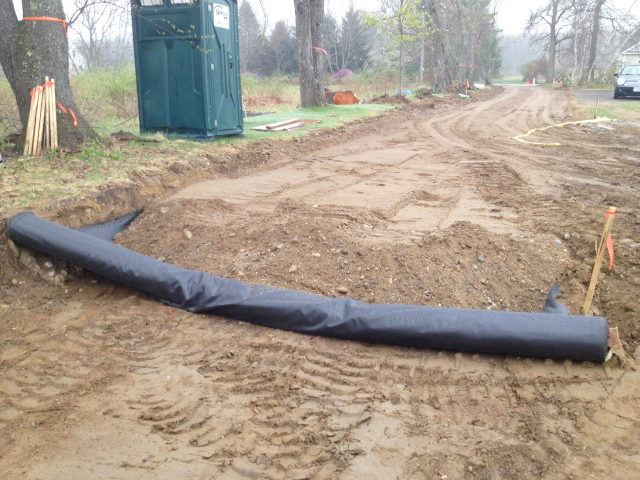
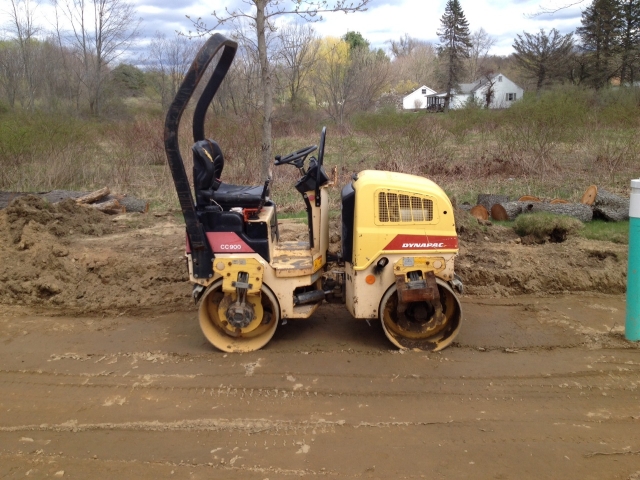
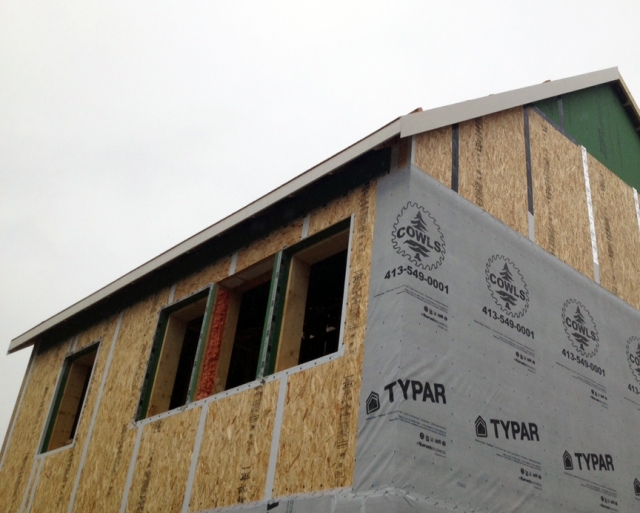
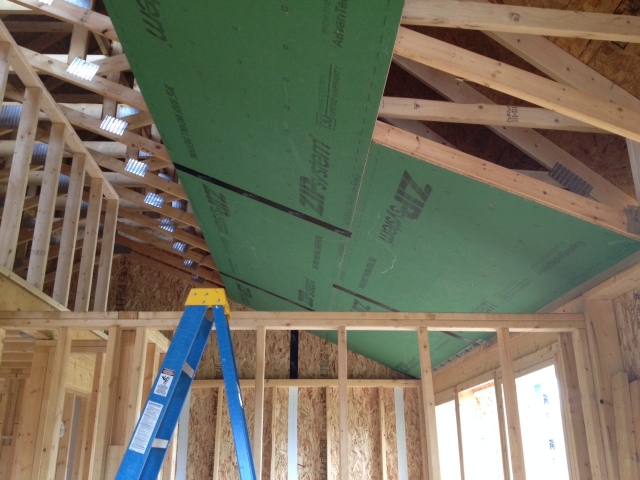
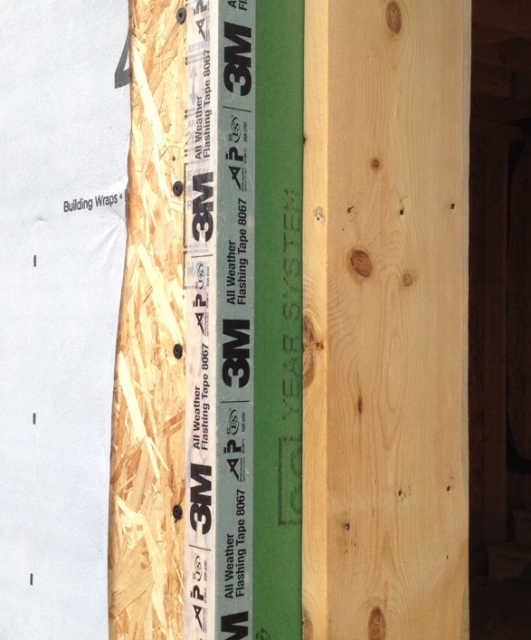
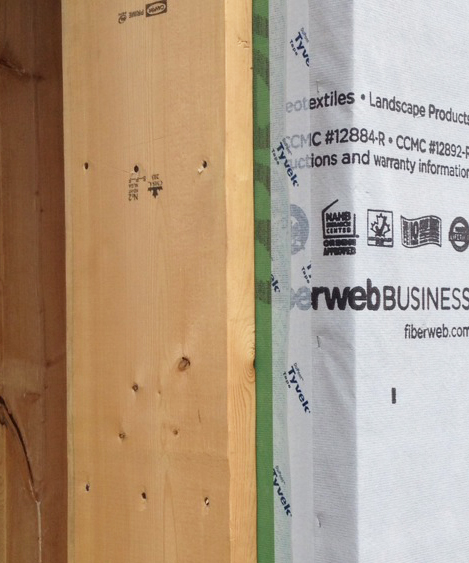
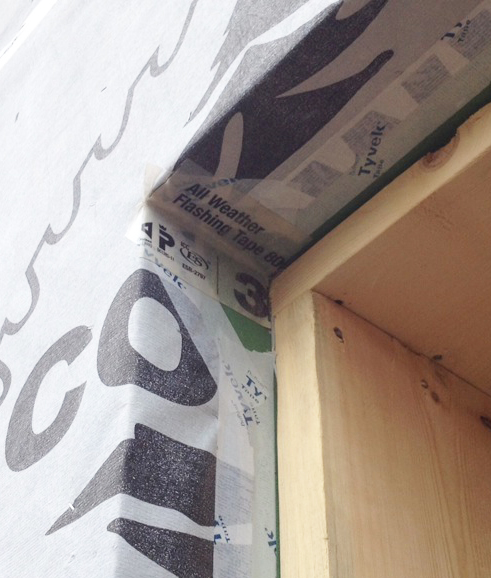
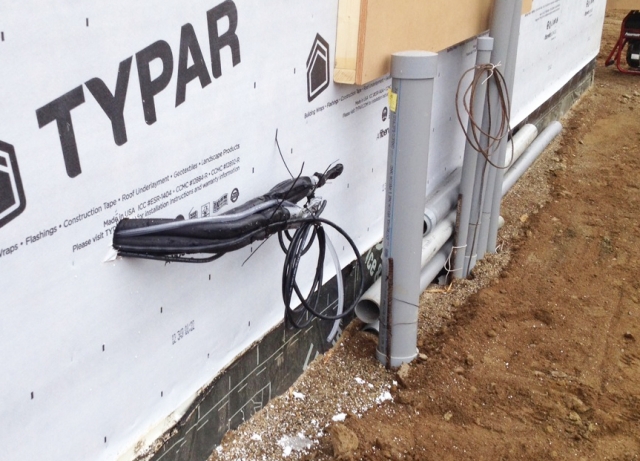
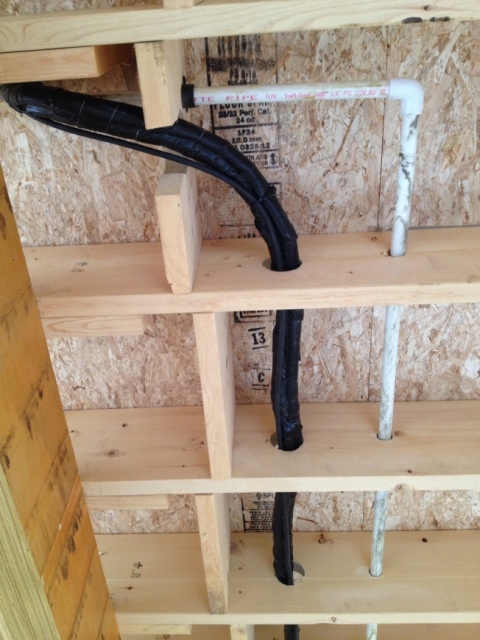
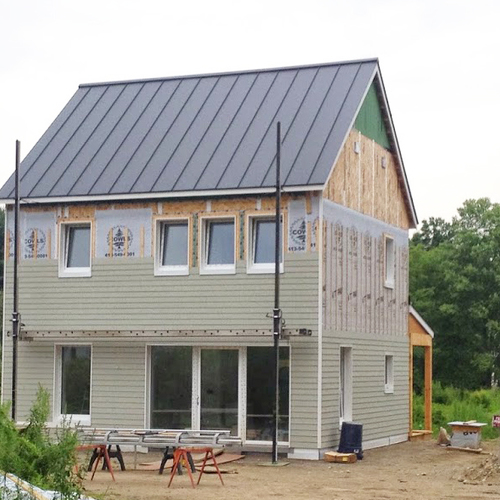
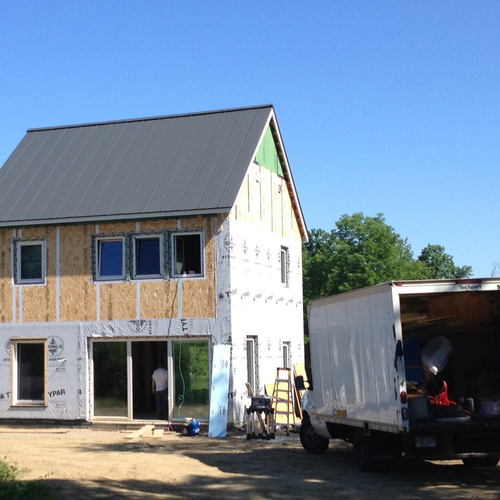
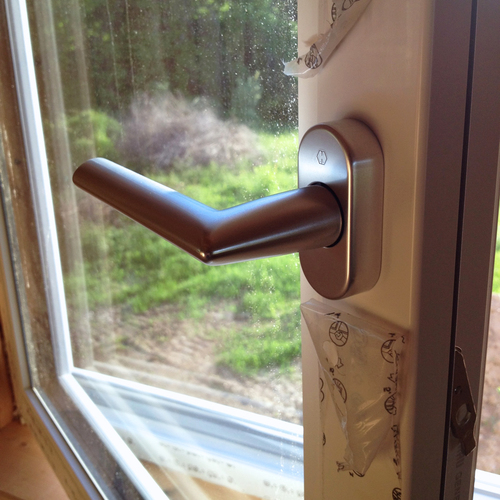
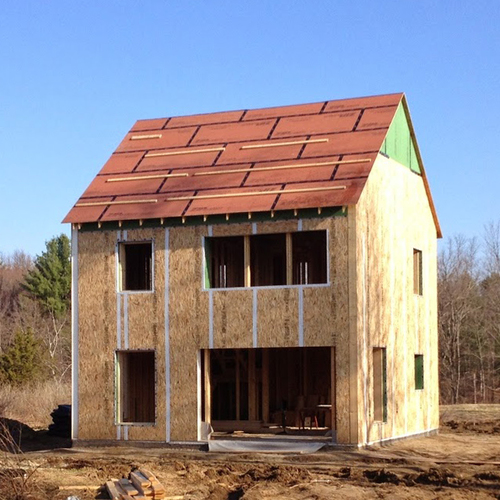






20 Comments
If it makes you feel any
If it makes you feel any better, the odds of getting a title 5 system and a well for 50k here in the people's republic are pretty slim. Bylaws are usually written such that if the sewer and water go by, you have to connect. Public safety? Hell no, they need the money!
Another reason it made sense to connect to the grid
Alexi,
You could have built an off-grid house, of course. But if you had, you wouldn't be heating it with a ductless minisplit. You'd be heating it with a wood stove or a propane space heater with a through-the-wall vent.
Compressors always pump vapor to vapor
A heat pump / ac compressor is designed to take refrigerant vapor and compress it to super-heated vapor, regardless of heat or cool mode. The coil acting as a condensor (inside for heat pump and outside for ac) condenses the vapor back to liquid rejecting heat in the process. Reversing valves turn the flow around to accommodate the heat or cooling mode. If liquid makes it way to a compressor it can damage it. Newer scroll compressors can take a little liquid "slugging", the older piston compressors often fail. The following link describes cooling operation followed by heating: http://www.achrnews.com/articles/92891-understanding-heat-pump-sequence-of-operation
Power Conduit
I am sure you paid a chunk of change for the copper in the power conduit. Curious how deep that conduit is as it does not look 18" from the photo.
You can still get a grid tied PV array and gain economic benefits, probably more than the off-grid system in the long run. Batteries for off-grid are a maintenance item and have to be replaced at significant cost every few years.
wHAt???
50 000$?
how the heck can you push 50 000$ on driveway and conduits ?
And i thought that my 200ft for 5000$ additional in ground electrical run so i could save ~30 mature trees was excessive !!! :p
I just can't get how you can add up to 50 000$
how to ruin a budget !
50K
From the full blog, it appears that the 50k is for excavation, as well as to run the underground utilities and build the driveway. Still a lot of $$, but I gather Amherst may be pricey.
As a comparison, here in Maine I just paid almost 40k for site excavation and backfill, septic system, loam spreading and seeding, a 6' x 80' stone wall and rough driveway, which included trenching for underground utilities. It also included grading for the slab, placing and compacting the stone for under the slab. The site guy also graded all around the building site to facilitate the framing. I thought it was a very fair price for a ton of work.
i guess we can't compare
i guess we can't compare prices because each situation requires different procedures and materials.
common Quebec costs ( out of cities )
- fully installed septic + field 4-6K$
- house site digg ~1-2K$
- 1 day of around house grading with some materials ~2k$
- ~100ft X 30ft comon front driveway work finished on graded and placed ~19mm stones ~ 2-3k$
still far from 40-50K$ ...
what is the usual hourly charge for diggers/excavators in your part?
Locally it ranges from 100$/h to 150$/h.
1 sand dumper truck load~ 100$
3/4 clean rocks truck load ~250$
Response to Jin Kazama
Jin,
Here in my part of Vermont, our costs are similar to yours.
Picture most builders....
Picture most builders.... Shaking their heads.... Saying "what the duck is up with this project?"
50k is the magic number... Utility/road.... Architect.... And on and on...
All for a perfectly framed view of a mountain.
I'm attaching a better view. All are free to blow it up and frame it at the top of your reasonably built home.
Response to Kazama
Holy Smokes....$4-6k for a septic would be a dream. Between poor soils and an overly conservative county septic dept, I have an MLPP system that is costing me $26k installed. I about had a heart attack on the price. A good chunk of the cost is "county approved soil" for remediating the field. Quite the racket!!
nice view AJ ..my kind :)
Also alot of alternative systems are accepted here , if they passed the gov tests.
Most are a solution for lack of space for a correct field, and most are bio/bacterium based.
Costs are in the 10-15K$ installed and requires only a small spreading field with only a rock bed and regular sand as requirements.
From what i've learned, locally, the requirements are only for thickness of the stratas and the types of soil to use and distance to land lines/water .
We usually have a local inspector come and check installation before covering it up ..
but we might be lucky there are no additional fees for inspection or permit other than the pretty cheap regular building permit.
Tight space bad soil we do
Tight space bad soil we do like Jin. Standard nice area I can install my price $1,000 for materials, 250 for stamped plans.
re
Just as it happens I have received a preliminary quote from my septic designer for installation of a pressure leaching field, between 7.5-9k, not including the other site work, the design work, the permitting, or the tank, so we are well over 15 k and I have pretty good soil. My last house had a recirculating sand filter that cost 30k in 1996, and I didn't pay for design, and the installer told me he underquoted it. They go about 50k now, although they are falling out of favor due to complexity[though I had little trouble with mine]
A well depends on how deep you go. I have spoken with people in my area that have gone over 400 feet, where mine is pretty shallow.
None of that is to imply that 50k is a great price for driveway and utility but I do not believe off grid would be a 'cheap' option
Local requirements definitely
Local requirements definitely play a factor. I install septic systems and do excavation for a living. Most septic systems in our area are mound systems. Permits alone are $1300 and if you tried to install a system yourself the project would be condemned. then a concrete tank and risers, electric pumps, floats/alarms, trucking in of sand and loam, etc and our systems wind up in the $12-18k range. Seems high, but almost $9k is permits and materials. Wells are often cased to 300' due to arsenic, so figure another $25k for a well. I got a quote for underground electric and it was $13k to do 500'. Also, if the OP has a long driveway they are also running their municipal sewer and water the same distance, which could mean oversized water lateral to deal with the pressure loss, and at a minimum multiple exterior clean outs for the sewer.
I did find the picture of the
I did find the picture of the roller amusing. A double smooth drum roller like that is typically reserved for small asphalt patches and wouldn't give you the deep compaction that you'd want. Wrong application for that equipment, but if they took their time you'll be okay. I'd wait at least one year before paving or adding concrete....those trenches will settle.
question for Rick
Rick: could you explain how casing the well down 300' reduces the level of arsenic? Obviously, that much casing adds enormous cost. I just paid less than $6K for a 380' well, but it only required 40' of casing.
My septic/ plumbing permit was $400. No building permit required in my little Maine town. I'm always astounded at how much costs vary from place to place.
The amount of $$ blown on
The amount of $$ blown on this project blows my mind...
Just the arch fees alone are crazy, for a shoe box.
Around here underground power would be $7 a foot including excavation (that's for a 1500 foot run, shorter run might be able to use less expensive wire) cable and telephone wire are usually free, and 1" conduit is $0.30/ft
Steven, the casing depths are
Steven, the casing depths are regulated by the county. Presumably a sealed well casing will stop the arsenic contaminated water at shallower drilling depths from contaminating the clean water from deeper depths. Obviously if the casing isn't grouted properly the casing wouldn't do much good.
13k 500' Electric
Around half that here including meter pan, main panel inspected and ready to be energized.
Just installed 200' system complete $2250.
Septic costs
As a data point, I just had a whole new septic system installed in my New Mexico house earlier this year for $4,200. This was a permitted and inspected project that included a 1,000 gallon vented concrete tank with effluent filter and a new drain field installed in heavy clay soils, with the previous tank filled in with concrete and the entire yard re-graded with the excess fill dirt. Some of the prices being thrown around here are mind-boggling to me. How does anybody afford to live in places like these? Unless of course you are the person charging those prices! :-)
Log in or create an account to post a comment.
Sign up Log in